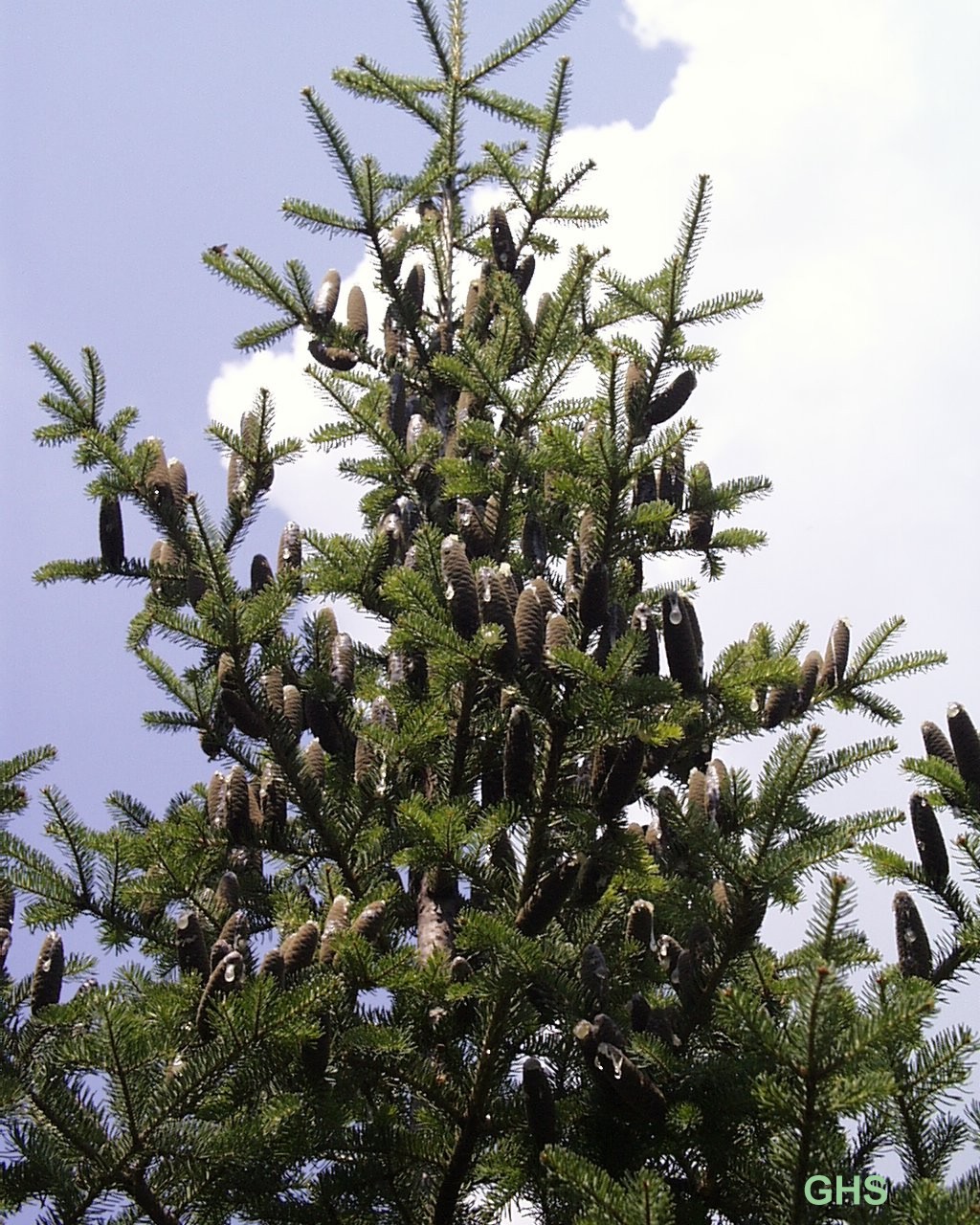- Abies balsamea
Taxobox
name = Balsam Fir
status = LR/lc | status_system = IUCN2.3

image_width = 240px
image_caption = Tree with cones
regnum =Plant ae
divisio =Pinophyta
classis = Pinopsida
ordo =Pinales
familia =Pinaceae
genus = "Abies"
species = "A. balsamea"
binomial = "Abies balsamea"
binomial_authority = (L.) Mill.
range_
range_map_width = 240px
range_map_caption = RangeThe Balsam Fir ("Abies balsamea") is a
North America nfir , native to most of eastern and centralCanada (Newfoundland west to centralAlberta ) and the northeasternUnited States (Minnesota east toMaine , and south in theAppalachian Mountains toWest Virginia ). [cite web |url=http://plants.usda.gov/java/profile?symbol=ABBA |title=PLANTS Profile for Abies balsamea (balsam fir) | USDA PLANTS |accessdate=2007-07-17 |format= |work=]It is a small to medium-size
evergreen tree typically 14-20 m tall, rarely to 27 m tall, with a narrow conic crown. Thebark on young trees is smooth, grey, and withresin blisters (which tend to spray when ruptured), becoming rough and fissured or scaly on old trees. The leaves are flat needle-like, 1.5-3 cm long, dark green above often with a small patch ofstomata near the tip, and two white stomatal bands below, and a slightly notched tip. They are arranged spirally on the shoot, but with the leaf bases twisted to appear in two more-or-less horizontal rows. The cones are erect, 4-8 cm long, dark purple, ripening brown and disintegrating to release the wingedseed s in September.There are two varieties:
*"Abies balsamea" var. "balsamea" (Balsam Fir) - bract scales short, not visible on the closed cones. Most of the species' range.
*"Abies balsamea" var. "phanerolepis" (Bracted Balsam Fir or Canaan Fir) - bract scales longer, visible on the closed cone. The southeast of the species' range, from southernmostQuebec toWest Virginia . The name 'Canaan Fir' derives from one of its native localities, the Canaan Valley in West Virginia. Some botanists regard this variety as a natural hybrid between Balsam Fir andFraser Fir ("Abies fraseri"), which occurs further south in the Appalachian Mountains.Ecology
On exposed ridges and mountain tops, stands of balsam fir occasionally develop
fir wave s. Often found in association with black spruce, white spruce and tremblingaspen ..This tree provides food for moose, American red squirrels,
crossbill s and chickadees, as well as shelter for moose, snowshoe hares, white-tailed deer, ruffed grouse and other small mammals and songbirds. The needles are eaten by somelepidoptera n caterpillars, for example theIo moth ("Automeris io").Uses
The
resin is used to produceCanada balsam , and was traditionally used as a cold remedy and as a glue for glasses and optical instrument components. Thewood is used forpaper manufacture and is also a popularChristmas tree Tree emblem
Balsam Fir is the Provincial tree of
New Brunswick .References
*
* [http://www.conifers.org/pi/ab/balsamea.htm Gymnosperm Database: "Abies balsamea"]
* [http://www.efloras.org/florataxon.aspx?flora_id=1&taxon_id=233500002 Flora of North America]
* Karen Legasy, Shayna LaBelle-Beadman & Brenda Chambers. "Forest Plants of Northeastern Ontario".Lone Pine Publishing /Queen's Printer for Ontario , 1995.External links
* [http://www.discoverlife.org/20/q?search=Abies+balsamea Compiled images]
Wikimedia Foundation. 2010.
